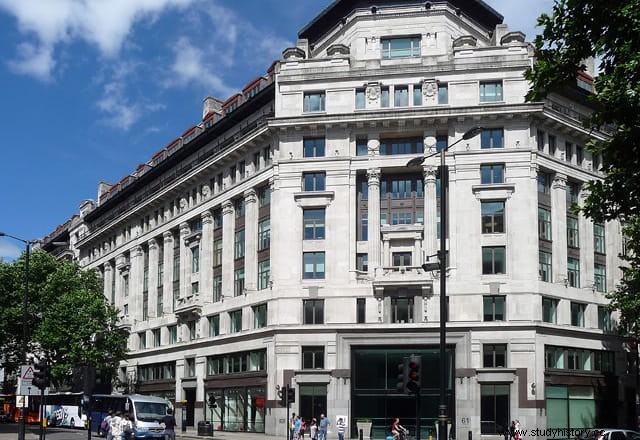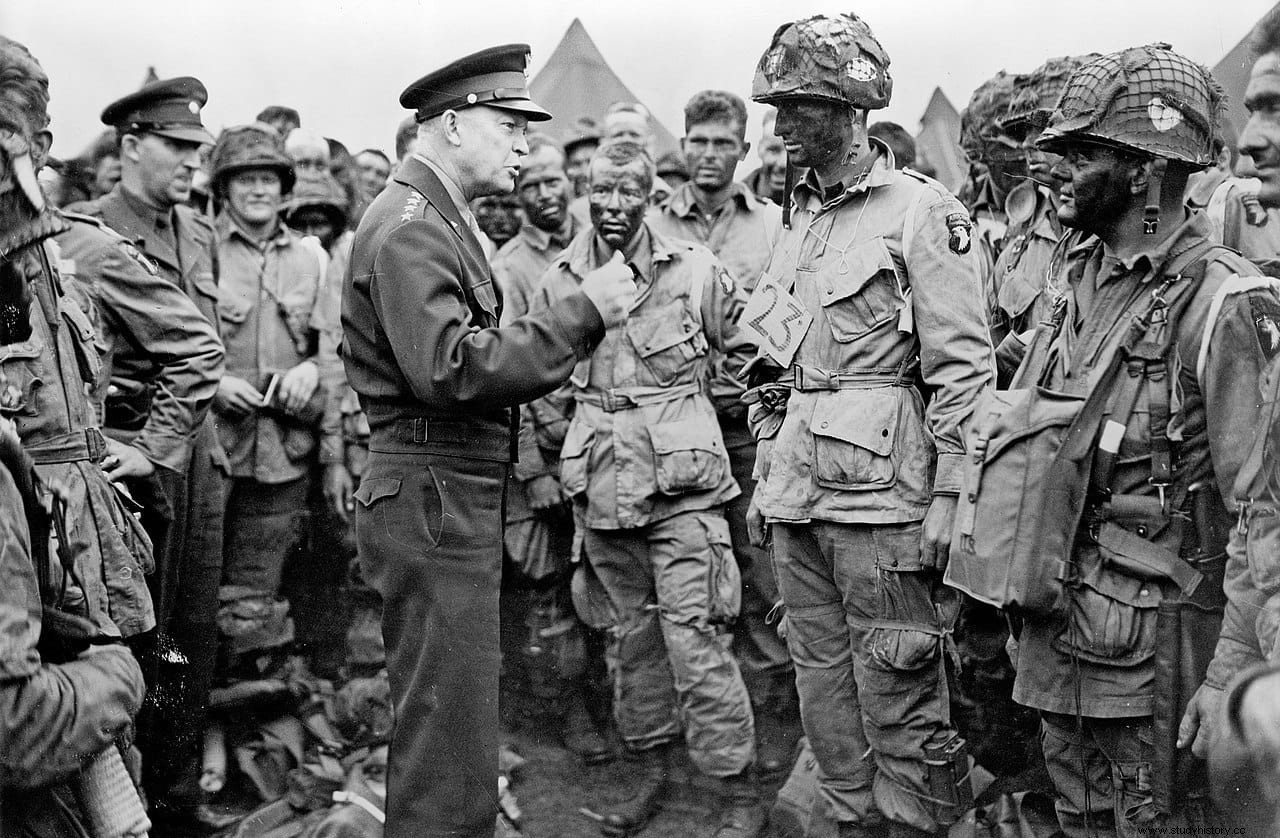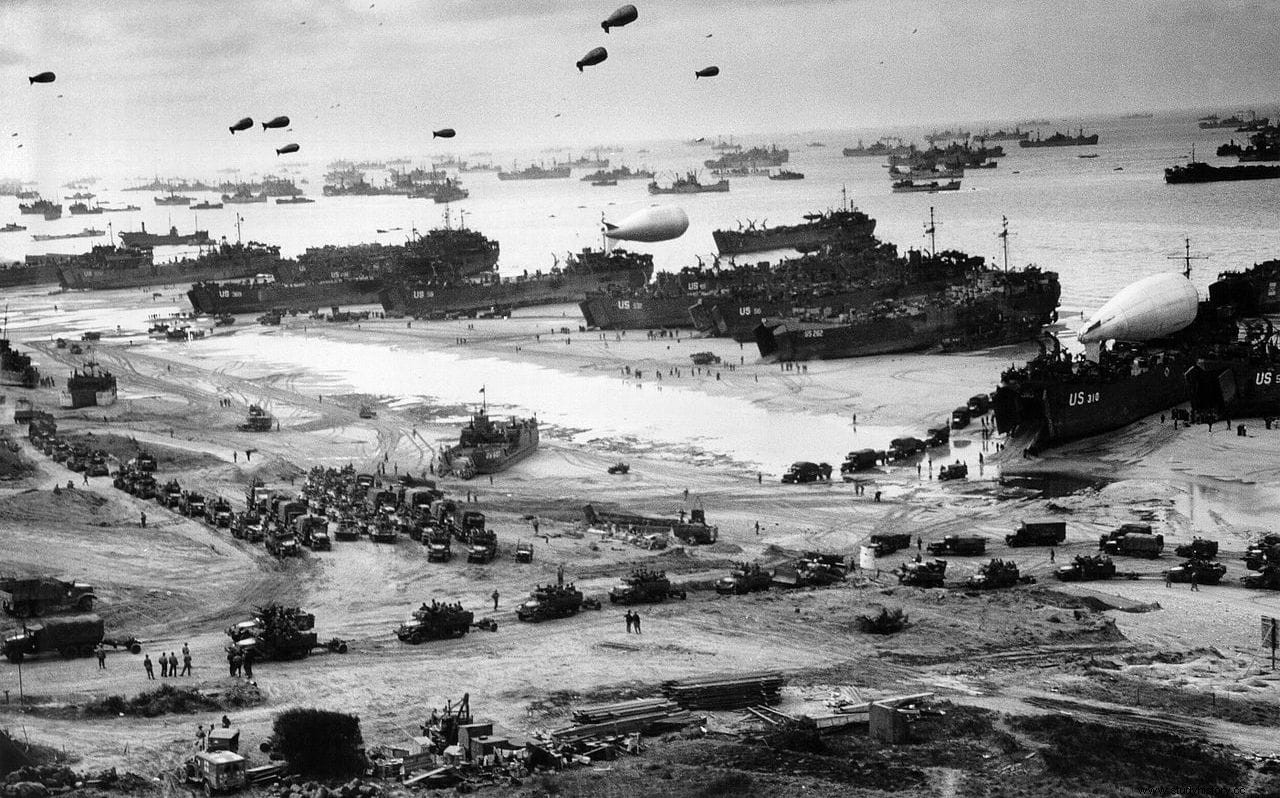All history buffs, or at least those who especially like war history, remember a date that marked a before and after in World War II:June 6, 1944. That day is usually called by its name in key, the D-Day , the one in which Operation Overlord began; that is, the continental invasion of the allied forces. However, the landing on the beaches of Normandy could have been carried out twenty-four hours earlier had it not been for the fact that one man dissuaded Eisenhower from delaying it, anticipating that the weather would improve and make maneuvering easier. His name was James Stagg.
Of course, this was not an intuition or something decided by chance. Stagg was in charge of the Met Office, the United Kingdom's national weather service, created in 1854 by Vice Admiral Robert FitzRoy (which will be familiar to more than one because he was the captain of the HMS Beagle during the voyage of Charles Darwin) but reinforced with a fortnight of coastal stations after the tragic sinking of the ship Royal Charter off the coast of Anglesey involved the death of 459 passengers. Later, after the First World War, a section was assigned to the Air Ministry, with which it shared headquarters (the Adastral House), since the increasingly important aviation also needed weather forecasts. Therefore, when the Second World War broke out, the Met Office was divided between the Royal Navy and the RAF (Royal Air Force).

James Stagg, a Scottish native of Dalkeith, in the Low Lands, where he was born in 1900, the son of a plumber and a seamstress, was assigned to the latter. Educated at Edinburgh's Broughton High School, he briefly passed through the Royal Flying Corps (the British air force during the First World War) and in 1921 entered university to study mathematics and philosophy. After graduating he went to work as a science teacher at George Heriot's School, an institution founded in the 17th century for poor children. In 1931 he was placed in command of an expedition to the Arctic to investigate terrestrial magnetism and climatic issues, which gave him an experience in meteorology that compensated for his lack of specific training (something that, as we will see, he would be reproached for). /p>
Three years later and already with a doctorate, he entered the Met Office and in 1939 he obtained the direction of the Kew Observatory, built specifically in 1769 by order of King George III (that is why it is also called King's Observatory) to observe the transit of Venus . When hostilities broke out between the Axis powers and the Allies, Stagg was appointed captain of the Royal Air Force Volunteer Reserve, a corps of volunteers established in 1936 to provide auxiliaries to the air force and that at the outbreak of the conflict provided troops to aircraft crews.
Since Germany began to give ground, and especially after landing in Italy, it was a matter of time before the Allies made the leap to the western part of the continent. This was agreed upon at the Trident Conference, held in Washington in May 1943, appointing US General Dwight D. Eisenhower commander of SHAEF (Supreme Headquarters Allied Expeditionary Force, that is, Supreme Headquarters Allied Expeditionary Force), aided by British General Bernard Montgomery as commander of the XXI Army Group. Then began to design the aforementioned Operation Overlord , based on an amphibious landing on the north coast of France, departing from England, which was to be complemented by the launch of airborne forces behind enemy lines.
Obviously, to carry out an action of such dimensions, with more than a million and a half soldiers in successive waves, it was convenient to choose a moment with good weather conditions. In the first place, the previous night there had to be a full moon, not only to make it easier for the planes to drop paratroopers but also so that the landing craft could reach the beaches during the rising tide, detecting the obstacles planted by the Germans. and calculating the moment to open its ramps to let the soldiers out without leaving them too exposed to the enemy machine guns. On the other hand, it was advisable to avoid cloudiness that would make aerial bombing difficult, as well as strong winds and rain that would cause problems for ships and troops.

Taking into account these and other conditions, which meant that he could only choose between a few days of the year, Eisenhower chose June 5. But he was met with objection from an officer with a restrained manner, a wiry build, and enormous stature (nearly six feet):“Here comes six foot two Stagg and six foot one inch sadness” , was Admiral Sir George Creasy's famous phrase to define it, referring to his pessimism regarding time. Stagg had been put in charge of the meteorology of the operation and he was in charge of coordinating the information provided by the three teams of two meteorologists each who worked on it, the one from the Royal Navy, the one from the RAF and the one from the United States Air Force, called respectively Admiralty, Dunstable and Widewing . Each one had their own work system and, inevitably, they competed with each other to present themselves as more reliable than the others. Stagg tried to harmonize them and only managed to be despised for his lack of specialized academic training.
The tension exploded on June 3, when the American team predicted good weather for June 5 and the others denied it, assuring that there would be a storm. Since satellites did not yet exist, the results could differ quite a bit and could hardly be done more than a couple of days ahead. Widewing he did not back down, so the final decision on what information would be provided to the military rested with the boss, Stagg. On the night of June 4, he met at the Southwick House headquarters with the commanders, who were somewhat discouraged because it turned out that, indeed, the conditions were adverse despite the fact that summer was about to begin:very strong wind, clouds low and heavy seas. Stagg had the last word and gave them some good news.
Indeed, according to the data available to him, it would only be necessary to delay the invasion for one day, since the following night the weather would improve enough to attempt the attack on the 6th. An eight-hour window that had to be taken advantage of because, otherwise, it would be necessary to wait a couple of weeks, from June 18 to 20, although by then there will be no full moon. Since that option meant jeopardizing Operation Overlord , both because of the logistical problems involved in returning the troops to their camps and because of the risk of spies tipping off Rommel, and despite the fact that not all commanders wanted to risk it if conditions were not perfect, the commander decided to listen to Rommel. Stagg and attack the 6th. His chief of staff, Walter Bedell Smith, Montgomery and Admiral Bertram Ramsay agreed; however, Trafford Leight-Mallory, air marshal, was not so clear.
Curiously, between June 19 and 22, Normandy was hit by a storm that would have prevented the landing, since the boats were not designed to withstand such rough seas. The Luftwaffe meteorological service also had that forecast, which predicted that it would be the culmination of two weeks of storm, although they could not specify as much as their enemies because they were the ones who completely controlled the English Channel. However, the commanders considered an invasion unlikely at that time and several of them took the opportunity to attend military maneuvers that were going to take place in Rennes, to the east of Brittany; Soldiers were given quite a few furloughs and Rommel even went to Germany to celebrate his wife's birthday and meet with Hitler to convince him that, belatedly or without him, the invasion was imminent and he would need more armor.

As is known, shortly before midnight on June 5 almost a thousand and a quarter planes dropped three airborne divisions behind the lines of the Atlantic Wall (name given to the network of German coastal defenses) and at dawn, preceded by a brutal bombardment from the sea that lasted three quarters of an hour, the famous landing of 132,000 soldiers in several waves took place. In the end, although the weather had improved, strong winds blew, the swell was higher than expected and the currents carried some boats away from the expected point of arrival, which, together with the fact that the German forces were numerically superior to what was expected, made that Operation Overlord was not considered finished until almost a week later.
For James Stagg, on a personal level, that 1944 must have been memorable, since his second son, Peter, was also born; actually the whole war, since he had had the first three years before, after marrying Elizabeth Nancy Kidner in 1940. At the end of the war, he was decorated with the Legion of Merit American and appointed Officer of the Order of the British Empire. He continued to work as a meteorologist, heading the Met Office, until his retirement in 1960. Before that, he had already received other awards, such as being a fellow of the Order of the Bath in 1954, a member of the Royal Society of Edinburgh in 1957 and president of the Royal Meteorology Society in 1959. After his retirement he would still live until 1975; three years earlier he had published an account of his experience in the war.
